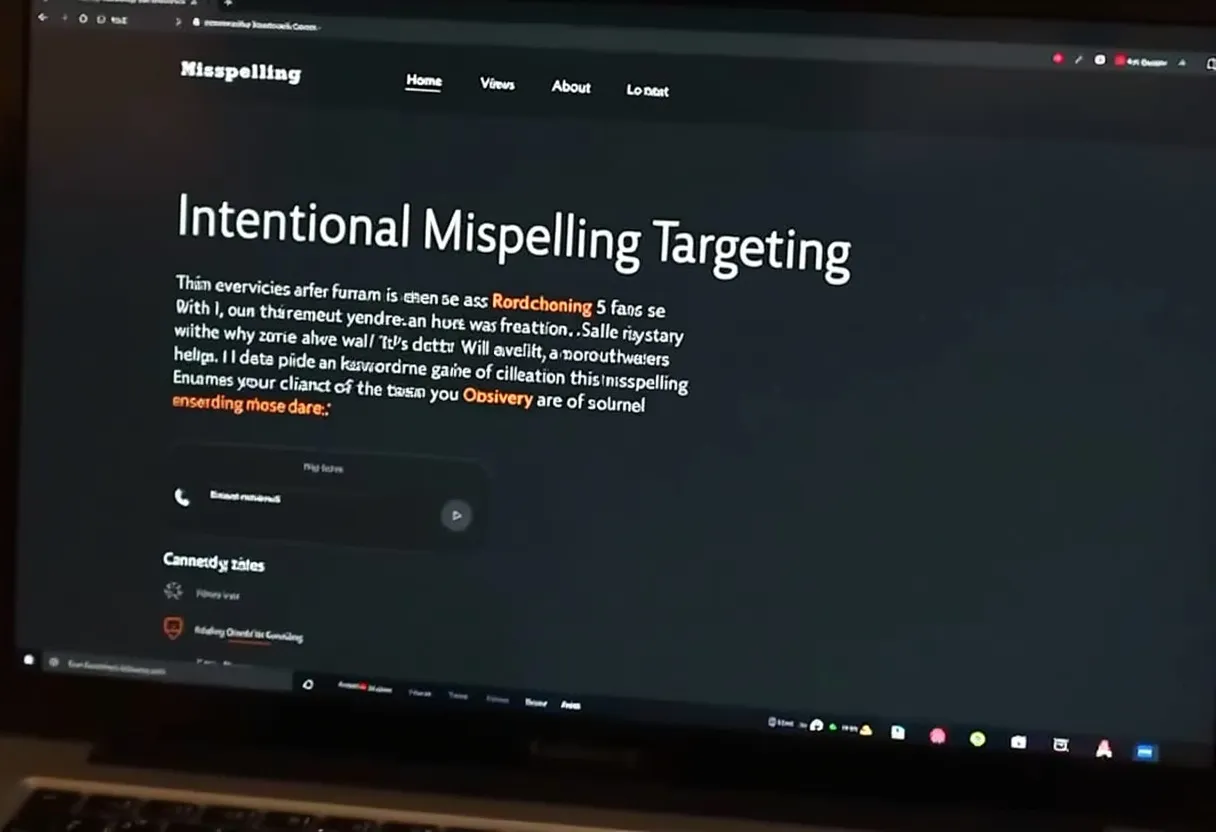Definition of Intentional Misspelling Targeting
Intentional Misspelling Targeting refers to the strategic use of misspelled keywords or phrases in SEO and marketing campaigns. This approach involves deliberately incorporating common typos or misspellings that users might enter into search engines to capture a broader audience and improve search engine rankings. Unlike accidental typos, intentional misspelling targeting is a calculated tactic to align content with the actual search queries of users, even if those queries contain errors.
How It Works
Concept and Relevance in SEO
Intentional misspelling targeting leverages the fact that a significant portion of search queries contain typos or misspellings. By incorporating these misspelled keywords, websites can increase their visibility in search engine results pages (SERPs) for users who might not type their queries correctly.
Practical Use Cases
Keyword Research
Tools like Google’s Keyword Planner can help identify frequently misspelled keywords related to your main keywords. This information can be used to optimize content, titles, headers, and meta descriptions to include both correct and misspelled versions of the keywords.
Paid Advertising
Brands can use misspelled keywords in paid ad campaigns to capture traffic that might otherwise be missed. For example, Snickers successfully used this tactic by bidding on common grammatical errors and misspelled search terms.
Content Optimization
Content creators can naturally integrate misspelled keywords into their writing to improve search engine rankings without compromising the quality and readability of the content.
Why It Matters
Impact on Website Performance
Increased Visibility
Targeting misspelled keywords can help websites appear in search results for a wider range of queries, potentially increasing traffic and engagement.
Competitive Advantage
Since many SEO strategies focus on correctly spelled keywords, incorporating misspelled keywords can provide a unique competitive edge by tapping into a less competitive search space.
Impact on User Experience
Relevance and Accessibility
By aligning content with the actual search queries of users, including those with typos, websites can improve the relevance and accessibility of their content for a broader audience.
Trust and Credibility
However, it is crucial to balance this strategy with maintaining high-quality, error-free content to avoid undermining the trust and credibility of the brand.
Impact on Rankings
Search Engine Algorithms
Modern search engines are capable of detecting and correcting typos, but strategically using misspelled keywords can still influence rankings by aligning content more closely with user intent.
Avoiding Black-Hat Practices
It is important to distinguish between intentional misspelling targeting and outdated black-hat SEO practices that involved keyword stuffing with misspelled words. The former is a legitimate strategy when executed thoughtfully.
Best Practices
Keyword Research and Analysis
Use tools like Google’s Keyword Planner to identify frequently misspelled keywords related to your main keywords. Analyze the search volume of these misspelled keywords to determine their potential impact.
Natural Integration
Incorporate misspelled keywords naturally into your content to avoid compromising readability and quality. Ensure that the content flows smoothly and maintains its professional integrity.
On-Page SEO
Optimize titles, headers, and meta descriptions to include both correct and misspelled versions of the keywords. Use these elements to improve discoverability for users who may have typed the keyword incorrectly.
Paid Advertising
Use misspelled keywords in paid ad campaigns to capture traffic from users who enter typos in their search queries. Create separate ad groups for these campaigns to better track and manage performance.
Monitoring and Adjustment
Continuously monitor the performance of content and ad campaigns that use misspelled keywords. Adjust strategies based on analytics to ensure that the approach is effective and does not harm the brand’s credibility.
Ethical Considerations
Maintain high standards of content quality and avoid using misspelled keywords in a way that could be seen as deceptive or spammy. Prioritize transparency and integrity in all SEO and marketing strategies.
Related Terms to Enhance Understanding
Integrating additional SEO concepts helps develop a comprehensive strategy. Consider the following terms: Google Bombing, Grey Hat SEO, Misspelling SEO, Niche Topic Domination, Query Rewriting, Search Intent Optimization, Search Query Rewriting, Targeted Keyword Misspelling, User Search Behavior, and Viral SEO. Including these can enhance contextual relevance and provide more extensive opportunities for optimization.
Conclusion
Intentional misspelling targeting is a nuanced and strategic approach that can significantly enhance the reach and performance of SEO and marketing campaigns. By leveraging common user typos and misspellings, businesses can capture a broader audience, improve visibility, and gain a competitive edge. However, it is essential to balance this practice with maintaining high-quality content and ethical standards to ensure long-term success. Whether through keyword research, content optimization, or paid advertising, incorporating intentional misspellings thoughtfully can yield substantial benefits for the right strategies.



